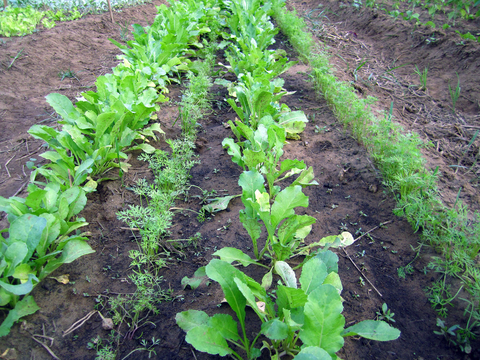If you’ve been browsing through seed catalogs, you’ve likely noticed that the number of plant varieties to choose from can be overwhelming. How do you choose the best tomato or zinnia for your garden when you have 50+ options? We'll cover some local and regional resources to help you narrow down your choices.
When you've made your choices, check out our growing guides for vegetables from A to Z.
For the beginning gardener
Are you just getting started with gardening? If so, a great resource to check out is the Master Gardener Variety trials. Each year, a dedicated team of volunteers chooses eight types of plants (usually a mix of flowers and vegetables), then selects six varieties of each that they expect to perform well in Minnesota. They try them in their gardens and report back with their favorite varieties.
These trials have been going on since the 1980s, so there is an abundance of recommendations on their site. The varieties they select are easy to find, and good choices for beginners. Learn more about the trials and see the results here.
For the gardener who likes a clean, problem-free garden
While it’s usually inevitable that we see some degree of insect and disease pressure in our gardens, we can avoid some of this pressure by selecting resistant varieties. The same goes for issues like splitting in tomatoes or brown bead in broccoli; some varieties are better adapted to avoid these issues.
Use the Extension tool What’s Wrong with My Plant to see if you can identify some of the problems you’ve seen in your garden in the past, and then check the codes in seed catalogs to find varieties that are resistant, or less susceptible to those issues.
For the experienced gardener
Gardeners with a bit more experience who want to dig into research can find variety trial reports from across the Midwest in a couple of places. The Midwest Variety Trial Report database from Purdue has an extensive collection of free reports from across the region. If you’re looking for something specific, like seedless pickling cucumbers, or bell peppers with resistance to bacterial spot or phytophthora, this is the database for you.
Another regional resource for variety selection is SeedLinked. This organization coordinates trials across the Midwest. You can search varieties on their site and see how gardeners and farmers from our region ranked them. You can even sort the rankings to look for things like yield, disease tolerance, flavor, and more.
For the gardener who is all about flavor
The Seed to Kitchen Collaborative is a breeding project from the University of Wisconsin-Madison that’s all about breeding delicious varieties that perform well in the Upper Midwest. They grow varieties of vegetables on farms and in gardens to see how they perform, then work with chefs to see how they taste. Check out the trials here.
For the gardener with limited space
While companion planting is a great practice for all gardeners, it is especially important in a small space. Check out our companion planting article to learn about which varieties work well when planted together.
Gardeners growing in small spaces should also think about adding containers, which can be used for growing on sidewalks, balconies, and other places we don’t typically think of as garden-able. Check out our recent container gardening video to learn more.
Of course, you can always simply open your favorite seed catalog and choose what looks the best, or check out your local seed library.



